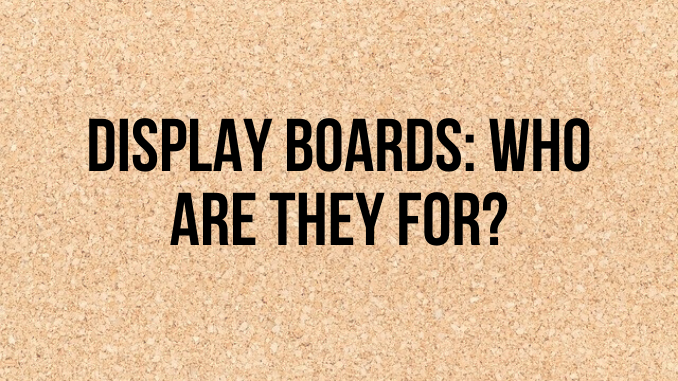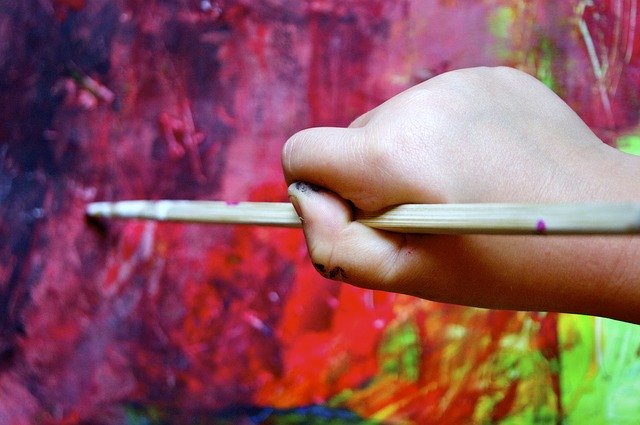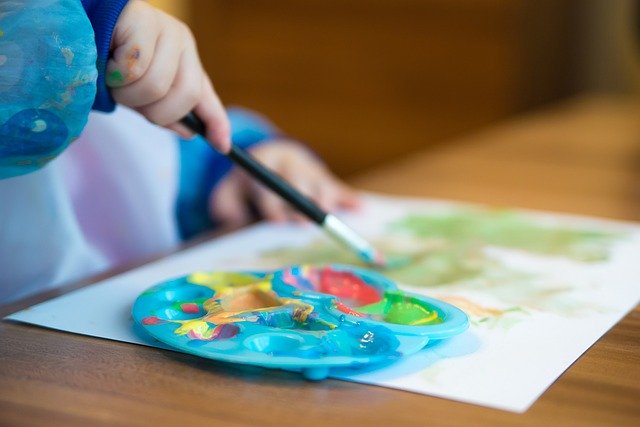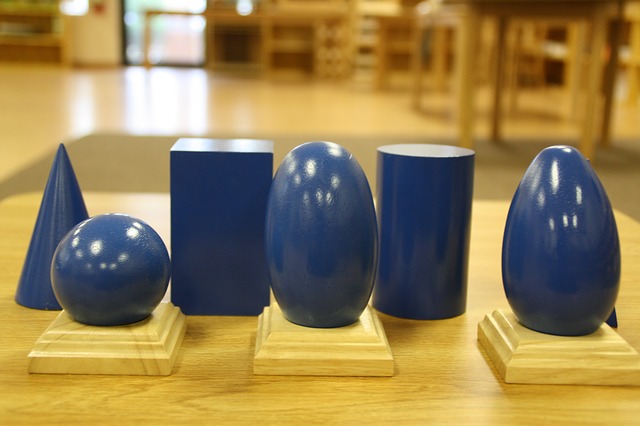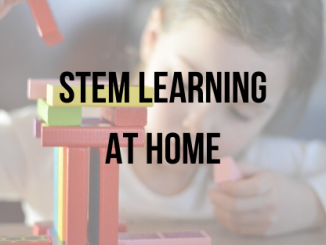A quick google search will give you an array of beautiful, colourful, creatively designed EYFS display boards.
Well-meaning practitioners aiming to make the learning environment stimulating will often design brightly coloured offerings and have children complete tasks that can be displayed. This kind of display is often planned by an adult, based on a topic or theme chosen by an adult, designed by an adult and completed by an adult with tokenistic participation by children. For example, children may be instructed to paint a picture of themselves for an ‘All about me’ display or even asked to glue together pre-cut pieces of paper to create a product.
This kind of activity takes away from the learning experience, as children are rushed through the activity to ensure that everyone is able to complete a product. Often the activities offered for display purposes have little to do with children’s developmental stage or interests and are simply chosen for aesthetic purposes. This is clearly not in children’s best interests. So then, how might display boards be utilised in children’s best interests?
Pride
Many of us display photographs and artwork in our homes that we are particularly proud of, for example, a wedding photograph, or a painting by a relative. Visual displays of things we are proud of are a normal part of everyday life and this should be the case in Early Years settings too.
Since the environment is for the benefit of the children it makes sense that we involve them in displaying work that they are proud of. Display boards can certainly be a part of this; we encourage children to try their hardest and show pride in their work and allowing children to display their work, and spending time and effort on doing this, is one way of reinforcing this message. We should be encouraging children to create their own written labels, which should be the focus, with practitioner’s writing there only as an enhancement (Beeley, n.d.)
However, it is important to remember that displaying work on the wall is not the only way to allow children to feel proud about their work, using learning journals or art books is another way for children to showcase their work, and having work used meaningfully in the setting is important. For example, a child might make their own ‘autumn nature hunt’ list rather than being provided with a printed one. This places value on the work as ‘good enough’ ‘useful’ and ‘purposeful’.
Learning
Displays can also be used to support and build on children’s learning. This approach moves beyond the idea of using boards just for ‘display’ or ‘showcasing’ and fully integrates them as part of the learning environment. The EYFS places an “Enabling environment” at the core of delivering age-appropriate teaching and learning, so practitioners should consider how display boards in the setting can enable learning, rather than merely recording it.
For example, many displays are at adult height which means that children are unable to see them properly, let alone access learning from them. Displays at child height may be more appropriate in an Early Years setting.
It is important to consider what kinds of interactions children might have with display boards that would enable further learning; for children in the EYFS, hands-on, practical, tactile learning is incredibly important as children at this age learn predominantly through their senses. However, many adults worry about children touch display boards and “ruining” them by pulling pieces away. This suggests that practitioners need to think through the purposes of boards and how children might be allowed physical, hands-on, experience in a way that doesn’t “ruin” them.
On the idea of interactive displays, Beeley says “A well-planned interactive display will engage children, stimulate their curiosity and spark their enthusiasm to learn more.”
Displays that provoke and prompt children’s learning are beneficial to children, but also to adult’s teaching. Successful displays are in use by children and adults on a regular basis, adults should be able to use elements of the display to stimulate learning and exploration.
A great example of this is the idea of a ‘working wall’. Working walls serve a completely different purpose to displays; a working wall should support children in their learning and help them to become more independent.
‘Working walls’ document the learning that has taken place and helps children to recall it and apply it. The key to a successful ‘working wall’ is to update it regularly with the learning that has taken place. ‘Working walls’ often will not look as neat or as cohesive as traditional ‘displays’ but they add much more value to children’s learning.
Setting the tone
Previously practitioners thought that bright colours were exciting and stimulating for children and therefore made great additions to the learning environment. However, the result was often a mish-mash of bright colours, under harsh lighting, with lots and lots of visual stimulus.
Educational approaches like Montessori and Reggio Emilia place significant emphasis on the learning environment, and specifically on the learning environment being calm, neutral and natural with lots of natural light. The communication friendly spaces ™ approach came about as a tool for enhancing children’s speech and language development, but recognises the important role of the environment in children’s learning and specifically advises against over-stimulating displays.
Displays in Early years settings should always primarily be for children, and seek to further their learning. They should not prove a distraction, or be over-stimulating. Whilst information boards for parents with lots of text may be appropriate in foyers, hallways or communal areas, in classrooms children should be the “target audience”
References:
Beeley, K. (n.d) Creating Interactive Wall Displays, retrieved from https://www.teachearlyyears.com/learning-and-development/view/creating-interactive-wall-displays

